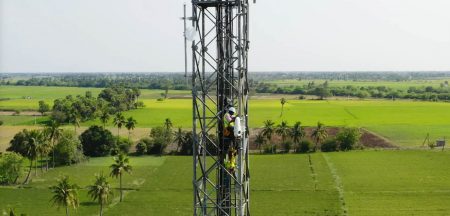
Human beings can be exasperating creatures. We go from amazement to bored entitlement so quickly that even rapidly evolving technology is soon passé. Geosynchronous satellites? Ho hum. Smartphones? Yawn. So it takes something quite special to remind us of the wonders of technology, and Google Loon is one of those special projects.
Only about a third of the world’s population has access to the Internet. Google Loon plans to change that using balloons. Yes, balloons — thousands of them. It might sound like a joke, but there’s solid science behind the idea.
Each balloon is 15m in diameter and carries equipment that allows it to communicate with special antennas on the ground, as well as with other balloons around it. The balloons are completely solar powered and have no means of propulsion other than the wind.
But what about weather, mountains, planes, etc? No problem; the balloons float 20km above the Earth’s surface, well above all of those obstacles. The other handy thing about being this high, in a band of Earth’s atmosphere called the stratosphere, is that wind flows in fairly consistent and predictable directions. These bands of wind allow Google’s geeks to steer the balloons around the globe without the need for heavy and expensive engines.
Google is still piloting the idea in New Zealand, so there’s no guarantee that it will actually work. But the possibilities are thrilling. Because the balloons can communicate both with each other and the ground, they can create enormous “mesh” networks, with the signal hopping from balloon to balloon over thousands of kilometres. Google’s engineers are confident that they’ll be able to offer speeds “similar to today’s 3G networks or faster”.
So whether you’re stuck on an isolated atoll or in the middle of a desert, all you would need is a Google antenna and single balloon within range and you’d be connected to the planet. If Google succeeds, it will be able to offer the world’s entire population all the benefits of a global satellite network at a fraction of the cost.
This is not entirely selfless. Google knows that more people on the Internet means more customers for its many services. All it needs is to give people access and a big chunk of them will become Google customers. This sounds arrogant until you realise it has just conclusively proved the success of this model using Android. The free operating system has connected tens of millions of new customers to Google search, e-mail and other services via their mobile phones.
But not everyone will be thrilled if Loon succeeds. Telecommunications networks across the developing world do not want Google honing in on their racket. African and South American network operators are, on the whole, extremely profitable. They would rather not have geeks and hippies from Silicon Valley offering 3G-like connectivity to their customers at a fraction of the price they charge (if not for free).
Google is happily oblivious to such petty scraps. It is currently worth nearly US$300bn and made over $10bn in profit last year alone. This gives it the luxury to disrupt other people’s markets just for fun, and perhaps to do a bit of good.
But it’s worth remembering that many other companies, when in Google’s current position, have quickly become conservative and bureaucratic, afraid to do anything too daring for fear of looking foolish. That’s what happened to both IBM and Hewlett-Packard and, to a lesser extent, Microsoft.
That Google continues to cultivate this daring spirit, despite enormous success, is rare. Whether you trust its motives or not, you have to admire its guts. — (c) 2013 Mail & Guardian
- Alistair Fairweather is the GM for digital operations at the Mail & Guardian
- Visit the Mail & Guardian Online, the smart news source




